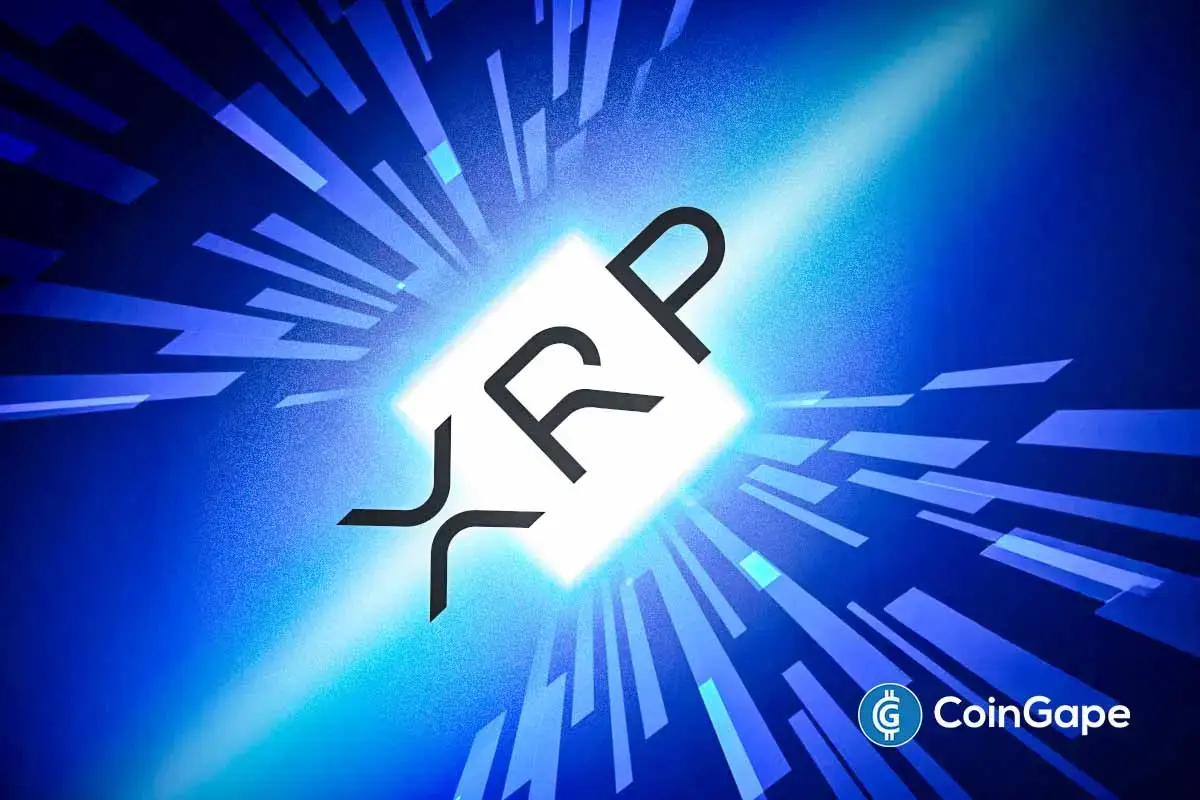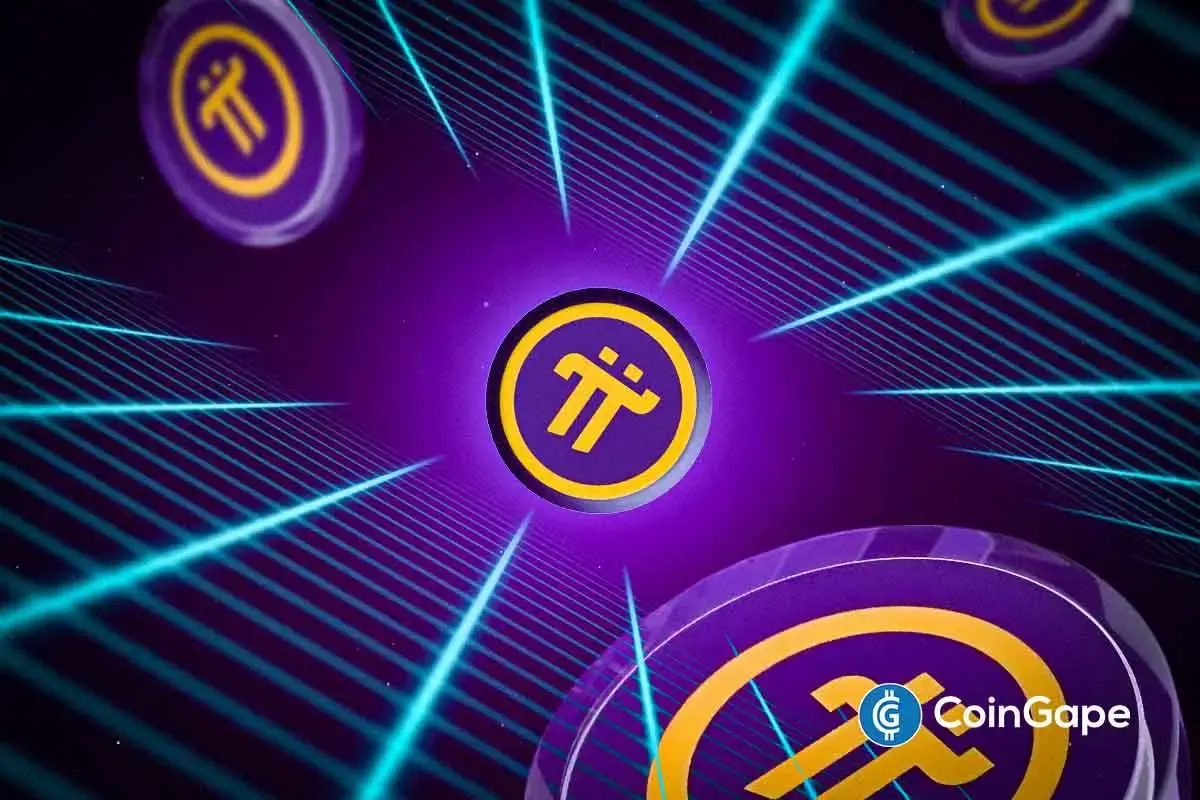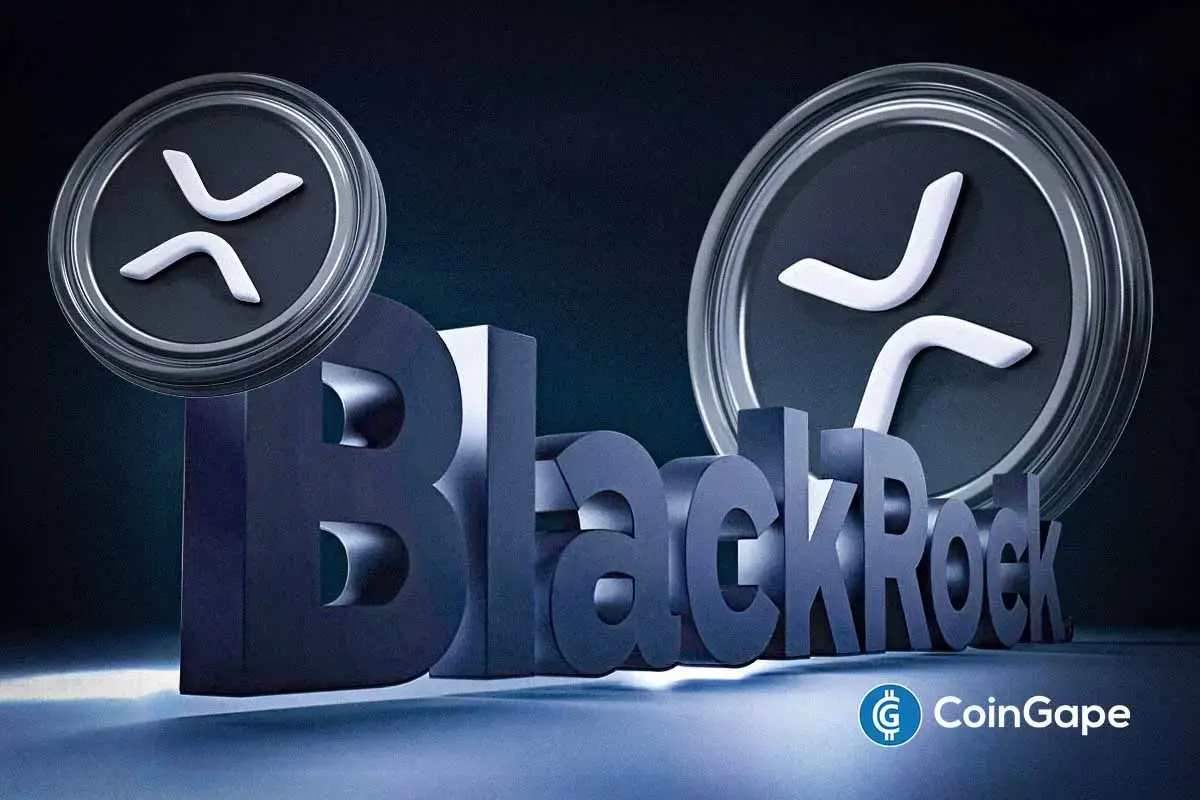Market
MrBeast Accused of Shady Crypto Deals, Coffeezilla Reveals


YouTube investigative journalist Coffeezilla, known for his deep dives into influencer-driven scams and questionable financial schemes, released a detailed video examining MrBeast’s alleged involvement in cryptocurrency ventures.
In the exposé, Coffeezilla scrutinizes MrBeast’s financial gains from crypto investments. He confronts serious accusations of insider trading and exploitation of his public platform for profit. However, MrBeast’s team reportedly declined to provide detailed comments, instead issuing a carefully worded legal statement.
Coffeezilla Investigation on MrBeast’s Potential Scams
According to Coffeezilla, this complex story blurs the line between “shady” and outright “illegal.” The investigation was prompted by allegations circulating online.
Some claim MrBeast profited as much as $23 million through manipulative and deceptive practices. Coffeezilla, known for his thorough research and impartiality, reached out to various sources—researchers, crypto project heads, and even MrBeast himself.
According to Coffeezilla, the accusations stem from two main sources. The first is a report by SomaXBT, which alleges MrBeast made $10 million by backing low-cap cryptocurrency tokens, which later plunged in value.
“An investigation into Mr. Beast, how he allegedly made $10 million+ by backing low-cap IDO crypto tokens promoted by influencers like Lark Davis, CryptoBanter, KSI, and others. Many of these projects are now down over 90%, with some rebranding after major losses,” SomaXBT shared on X (formerly Twitter).
Another group, look.io, claimed he made even more through “scams, shady deals, and his network of connections.” Coffeezilla asserts that while some allegations seem exaggerated, there is credible evidence supporting others, making it difficult to offer a single, definitive judgment.
Key Allegations: Inside Deals and Suspicious Tweets
Coffeezilla begins by dissecting a few specific cases involving cryptocurrency projects in which MrBeast allegedly participated, including Super and Earnity Chain. According to the report, MrBeast invested in these projects, later promoting them publicly while secretly selling off his shares. This led some to believe he was engaging in unethical, if not illegal, market manipulation.
For instance, Coffeezilla discusses leaked screenshots showing MrBeast’s alleged involvement in Super’s pre-sale. According to these images, MrBeast invested $100,000, ultimately cashing out over $10 million. Coffeezilla points out that MrBeast tweeted twice about Super, one of which came suspiciously close to a sale of tokens by a wallet linked to him.
In another tweet, he hinted at the project’s value, saying “super” in response to a comment about the token’s potential growth. Coffeezilla suggests this could have influenced MrBeast’s followers to buy in while he was secretly offloading his investment, a potential conflict of interest.
According to Coffeezilla, this pattern is repeated in the cryptocurrency Earnity Chain. MrBeast’s name was prominently featured on the Earnity Chain website. He even allegedly promoted an associated NFT (non-fungible token) charity auction meant to benefit his “Team Seas” initiative.
Yet, records show his alleged wallet sold millions of Earnity tokens during the auction’s two-month campaign. Coffeezilla acknowledges that the charity auction itself performed poorly. Nevertheless, the investigator criticizes the timing, labeling it a “terrible look” for MrBeast, known as the “charity guy.”
A Complicated Network of Influences and Power Players
According to Coffeezilla, one of the most complex elements of the story is MrBeast’s involvement in crypto beyond his direct actions. The detective uncovers links between MrBeast’s investments and Jason Williams, a figure in the cryptocurrency space who appears to have managed some of these funds.
Coffeezilla found that Williams was connected to the same wallet linked to MrBeast’s investments. Reportedly, he often promoted and sold tokens associated with MrBeast’s name. This association could potentially absolve MrBeast of some responsibility, but as Coffeezilla points out, the boundaries remain unclear.
Of note is that MrBeast has occasionally spoken publicly about his investments, including a now-infamous conversation with Logan Paul, where he discussed purchasing CryptoPunks after a call with influencer Gary Vee.
“So, it seems like MrBeast was very much aware of, and in some cases directly involved in, decisions to buy and sell crypto,” Coffeezilla concludes.
While MrBeast’s team denies he was directly involved in trading, Coffeezilla finds it hard to believe MrBeast was entirely hands-off.
MrBeast’s Team’s Response (Or Lack Thereof)
In response to these allegations, MrBeast’s team provided a statement. In it, they assert that his investments were managed through a fund that consulted with industry experts and adhered to all “appropriate regulations.”
According to the team, MrBeast did not control the day-to-day trades. Yet, as Coffeezilla observes, the statement “takes zero accountability” and fails to address specific claims about MrBeast’s tweets and sales.
Critics say MrBeast’s brand is being used as a marketing tool in cryptocurrency projects, leading to inflated values that hurt regular investors. This becomes especially problematic given MrBeast’s vast following and reputation as a philanthropist.
For Coffeezilla, the issue is not merely about legality; it is about ethics. He suggests that while MrBeast’s actions may not be criminal, they still raise questions about his responsibility to his audience.
“I think to MrBeast and probably to his fund, this is just business. They set out to make a lot of money, and they made a lot of money—what’s the problem, right?” Coffeezilla quipped.
Indeed, Coffeezilla’s exposé is a compelling, if unsettling, reminder of the blurred lines between fame, finance, and influence within the crypto playing field.
Disclaimer
In adherence to the Trust Project guidelines, BeInCrypto is committed to unbiased, transparent reporting. This news article aims to provide accurate, timely information. However, readers are advised to verify facts independently and consult with a professional before making any decisions based on this content. Please note that our Terms and Conditions, Privacy Policy, and Disclaimers have been updated.
Market
Report Alleges Massive Meme Coin Sniping on Pump.fun

According to a new report from Pine Analytics, token deployers on Pump.fun systematically funded sniper wallets to buy their own meme coins. This impacted over 15,000 token launches on the platform.
These sniper wallets operated primarily during US trading hours, executing standardized, profitable strategies. Unrelated bot activity obscures their behavior, making it extremely difficult to isolate these wallets—and they can readily adapt to new countermeasures.
Snipers Roam Free on Pump.fun Meme Coins
Pump.fun has remained one of the most popular meme coin launchpads on Solana despite persistent controversies and other criticism.
However, Pine Analytics’ new report has uncovered a new controversy, discovering systematic market manipulation on the platform. These snipes include as much as 1.75% of all launch activity on Pump.fun.
“Our analysis reveals that this tactic is not rare or fringe — over the past month alone, more than 15,000 SOL in realized profit was extracted through this method, across 15,000+ launches involving 4,600+ sniper wallets and 10,400+ deployers. These wallets demonstrate unusually high success rates (87% of snipes were profitable), clean exits, and structured operational patterns,” it claimed.
Solana meme coin deployers on Pump.fun follow a consistent pattern. They fund one or more sniper wallets and grant them advance notice of upcoming token launches.
Those wallets purchase tokens in the very first block and then liquidate almost immediately—85% within five minutes and 90% in just one or two swap events.

Pump.fun meme coin developers exploit this tactic to create the appearance of immediate demand for their tokens. Retail investors, unaware of the prior sell‑off, often purchase these tokens after the snipe, giving developers an unfair advantage. This constitutes market manipulation and erodes trust in the platform.
Pine Analytics had to carefully calibrate its methods to identify genuine snipers. Apparently, 50% of meme coin launches on Pump.fun involve sniping, but most of this is probably bots using the “spray and pray” method.
However, by filtering out snipers with no direct links to developer wallets, the firm missed projects that covered their tracks through proxies and burners.
In other words, the meme coin community does not have adequate defenses against systematic abuse on Pump.fun. There are a few possible ways that the platform could flag repeat offenders and sketchy projects, but adaptive countermeasures could defeat them. This problem demands persistent and proactive action.
Unfortunately, it may be difficult to enact such policies. Meme coin sniping is so systematic that Pump.fun could only fight it with real commitment.
Analysts think that building an on-chain culture that rewards transparency over extraction is the best long-term solution. A shift like that would be truly seismic, and the meme coin sector might not survive it.
Disclaimer
In adherence to the Trust Project guidelines, BeInCrypto is committed to unbiased, transparent reporting. This news article aims to provide accurate, timely information. However, readers are advised to verify facts independently and consult with a professional before making any decisions based on this content. Please note that our Terms and Conditions, Privacy Policy, and Disclaimers have been updated.
Market
Solana Leads Blockchain Metrics as SOL Momentum Builds

Solana (SOL) continues to show strength across multiple fronts, maintaining a bullish structure on its Ichimoku Cloud chart while gaining momentum in key market metrics. The BBTrend indicator has turned higher again, signaling renewed buying pressure after a brief cooldown.
On-chain activity remains strong, with Solana leading all blockchains in DEX volume and dominating fee generation thanks to the explosive growth of meme coins and launchpad activity. With SOL now trading above a key resistance level, the path is open for further upside—though a loss of momentum could still trigger a retest of lower supports.
Solana Maintains Bullish Structure, but Momentum Faces Key Test
On Solana’s Ichimoku Cloud chart, the price is currently above the Kijun-sen (red base line) but has dipped below the Tenkan-sen (blue conversion line), signaling weakening short-term momentum.
The flattening Tenkan-sen and price behavior suggest possible consolidation or the early stages of a pullback. Still, with the price holding above the Kijun-sen, medium-term support remains intact.

The overall Ichimoku structure remains bullish, with a thick, rising cloud and leading span A well above span B—indicating strong underlying support.
If Solana finds support at the Kijun-sen and climbs back above the Tenkan-sen, the uptrend could regain strength; otherwise, a test of the cloud’s upper boundary may follow.

Meanwhile, Solana’s BBTrend is currently at 6, extending nearly ten days in positive territory after peaking at 17.5 on April 14. The recent increase from 4.26 to 6 suggests renewed bullish momentum following a brief cooldown.
BBTrend, or Bollinger Band Trend, tracks the strength of price movement based on Bollinger Band expansion.
Positive values like the current one point to an active uptrend, and if the BBTrend continues to rise, it could signal stronger momentum and potential for another upward move.
Solana Dominates DEX Volume and Fee Generation as Meme Coins Drive Ecosystem Growth
Solana has once again claimed the top spot among all chains in DEX volume, recording $15.15 billion over the past seven days. The combined total of Ethereum, BNB, Base, and Arbitrum reached $22.7 billion.

In the last 24 hours alone, Solana saw $1.67 billion in volume, largely fueled by its booming meme coin ecosystem and the ongoing launchpad battle between PumpFun and Raydium. Adding to this good momentum, Solana recently surpassed Ethereum in Staking Market Cap.

When it comes to application fees, Solana’s momentum is just as clear. Four of the top ten fee-generating apps over the past week—PumpFun, Jupiter, Jito, and Meteora—are Solana-focused.
Pump leads the pack with nearly $18 million in fees alone.
Solana Breaks Key Resistance as Uptrend Targets Higher Levels, but Risks Remain
Solana has finally broken above its key resistance at $136, flipping it into a new support level that was successfully tested just yesterday.
Its EMA lines remain aligned in a bullish setup, suggesting the uptrend is still intact.
If this momentum continues, SOL price could aim for the next resistance zones at $147 and $152—levels that, if breached, open the door to a potential move toward $179.

The current structure favors buyers, with higher lows and strong support reinforcing the trend.
However, if momentum fades, a retest of the $136 support is likely.
A breakdown below that level could shift sentiment, exposing Solana to deeper pullbacks toward $124 and even $112.
Disclaimer
In line with the Trust Project guidelines, this price analysis article is for informational purposes only and should not be considered financial or investment advice. BeInCrypto is committed to accurate, unbiased reporting, but market conditions are subject to change without notice. Always conduct your own research and consult with a professional before making any financial decisions. Please note that our Terms and Conditions, Privacy Policy, and Disclaimers have been updated.
Market
Crypto Firms Donated $85 million in Trump’s Inauguration

According to a new report, 15 firms and individuals from the crypto industry donated more than $100,000 to President Trump’s Inauguration, totaling over $85 million.
Almost all of these companies apparently received direct or indirect benefits from Trump’s administration. This includes dropped legal proceedings, lucrative business partnerships, participation in Trump’s Crypto Summit, and more.
Crypto Industry Went All-In on Trump’s Inauguration
Since promising to bring friendlier regulations on the campaign trail, Donald Trump attracted a reputation as the Crypto President.
Trump’s Inauguration festivities included a “Crypto Ball,” and several prominent firms made donations for these events. Today, a report has compiled all crypto-related contributions of over $100,000, revealing some interesting facts.

Since taking office, President Trump and his family have been allegedly involved in prominent crypto controversies, and these donations may be linked to several of them.
For example, eight of the donors, Coinbase, Crypto.com, Uniswap, Yuga Labs, Kraken, Ripple, Robinhood, and Consensys, had SEC investigations or lawsuits against them closed since Trump’s term began.
The commission might have dropped its probe against these companies anyway due to its changing stance on crypto enforcement. However, being in the President’s good books likely helped the process.
Further Alleged Benefits for Donors
In other words, nearly half the firms that made donations to Trump’s Inauguration have seen their legal problems cleared up quickly. This isn’t the only regulation-related benefit they allegedly received.
Circle, for example, recently made an IPO after openly stating that Trump’s Presidency made it possible. Galaxy Digital received SEC approval for a major reorganization, a key step for a NASDAQ listing.
Other donors, such as Crypto.com and ONDO, got more direct financial partnerships with businesses associated with the Trump family.
Previously, Ripple’s CEO, Brad Garlinghouse, anticipated a crypto bull market under Trump. Also, XRP, Solana, and Cardano were all unexpectedly included in the US Crypto Reserve announcement.
All three of these companies made major donations to Trump’s Inauguration.
It seems that most of the firms involved got at least some sort of noticeable benefit from these donations. Donors like Multicoin and Paradigm received invitations to Trump’s Crypto Summit, while much more prominent groups like the Ethereum Foundation got snubbed.
Meanwhile, various industry KOLs and community members have already alleged major corruption in Trump’s crypto connections.
While some allegations might lack substantial proof, the crypto space has changed dramatically under the new administration, for both good and bad.
Disclaimer
In adherence to the Trust Project guidelines, BeInCrypto is committed to unbiased, transparent reporting. This news article aims to provide accurate, timely information. However, readers are advised to verify facts independently and consult with a professional before making any decisions based on this content. Please note that our Terms and Conditions, Privacy Policy, and Disclaimers have been updated.





















